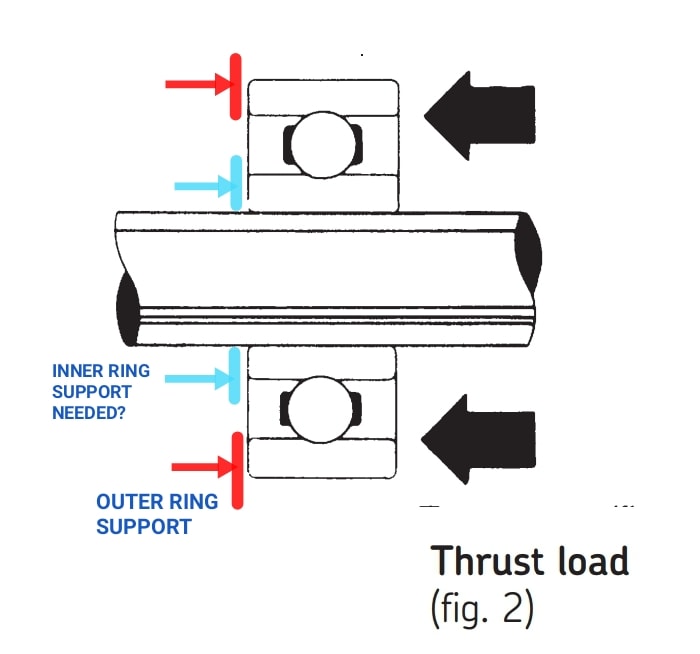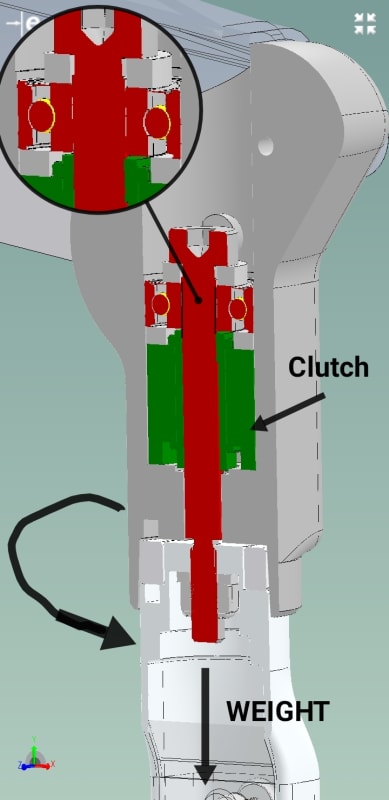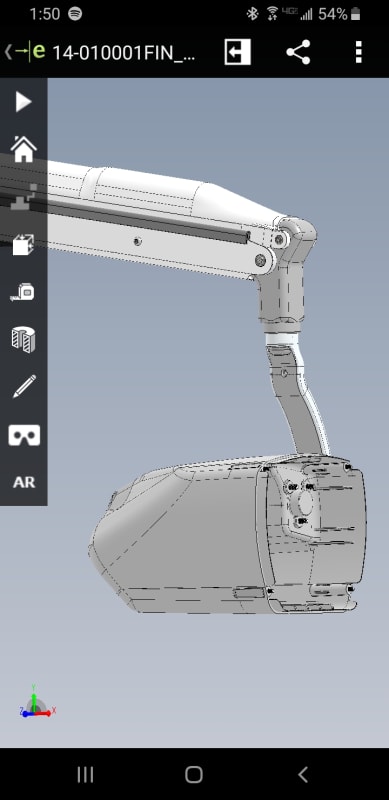Mandrill22
Mechanical
Do the inner ring and outer ring BOTH need to be supported on a deep groove ball bearing to support axial load?
The outer ring will be axially supported with a shoulder and the outer ring is press fit. Does the inner ring need to rotate against something, causing friction? Is the blue support needed? It's a 15 lb load, 24 mm OD, 8mm shaft, moving very slowly by hand.

The outer ring will be axially supported with a shoulder and the outer ring is press fit. Does the inner ring need to rotate against something, causing friction? Is the blue support needed? It's a 15 lb load, 24 mm OD, 8mm shaft, moving very slowly by hand.



